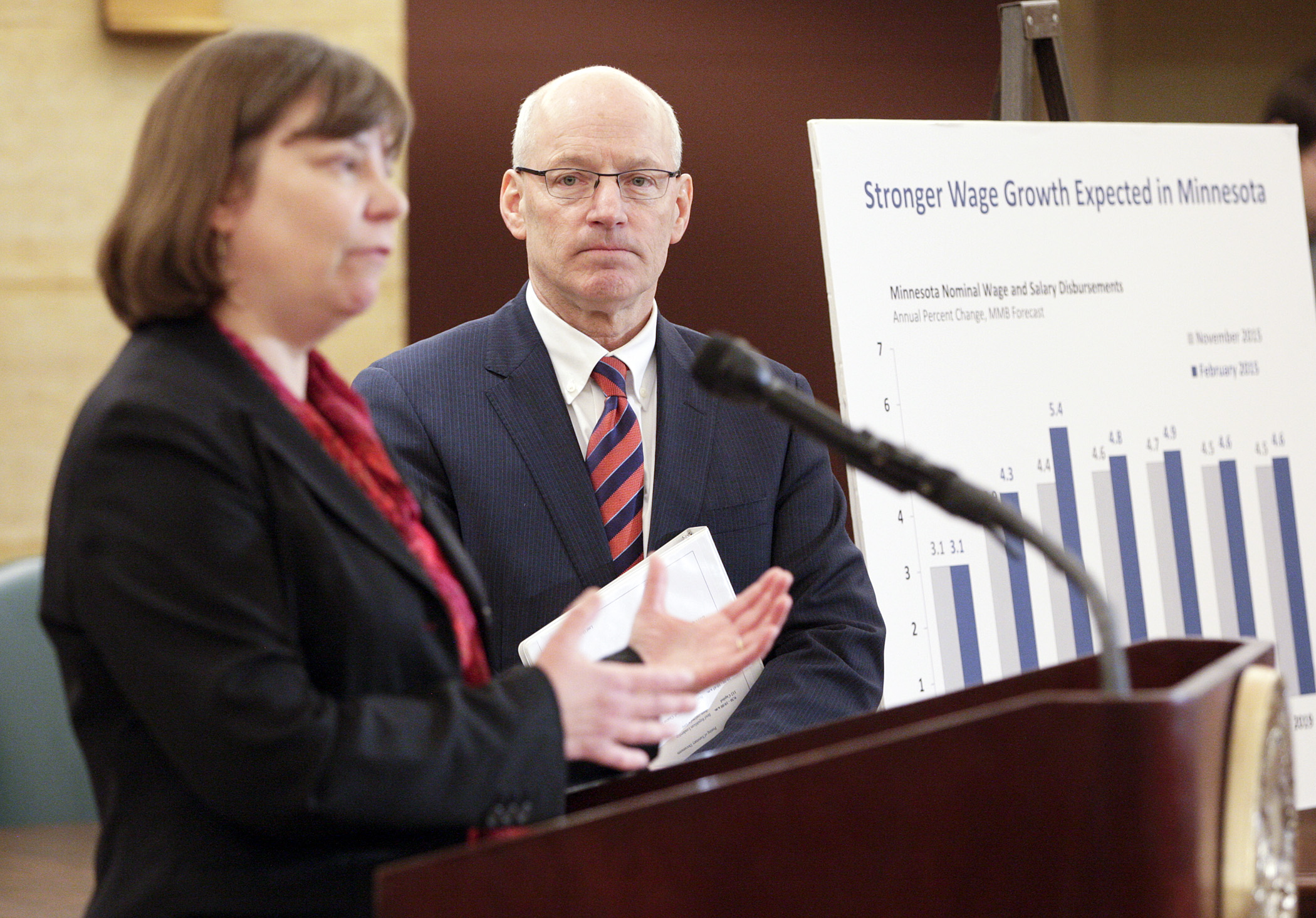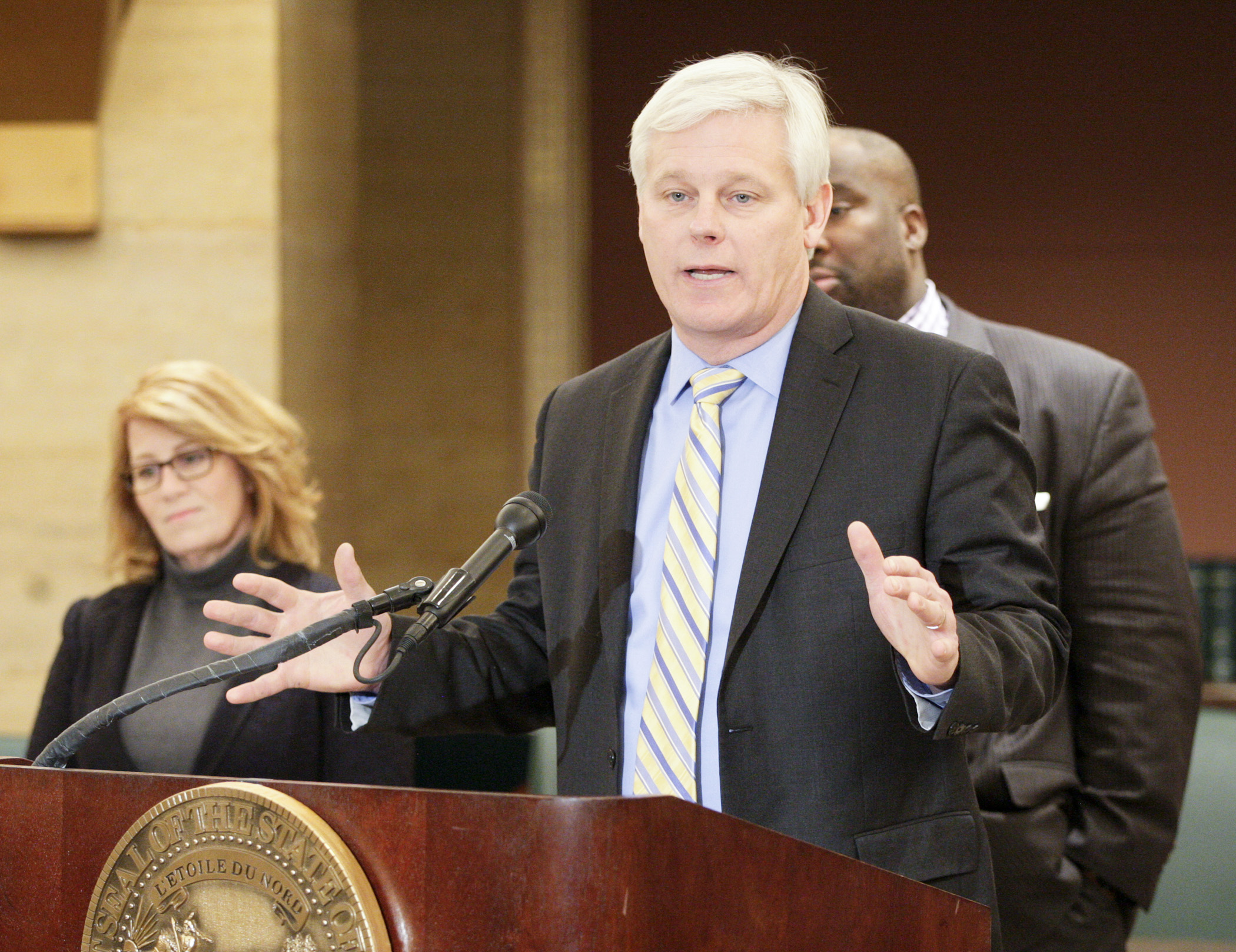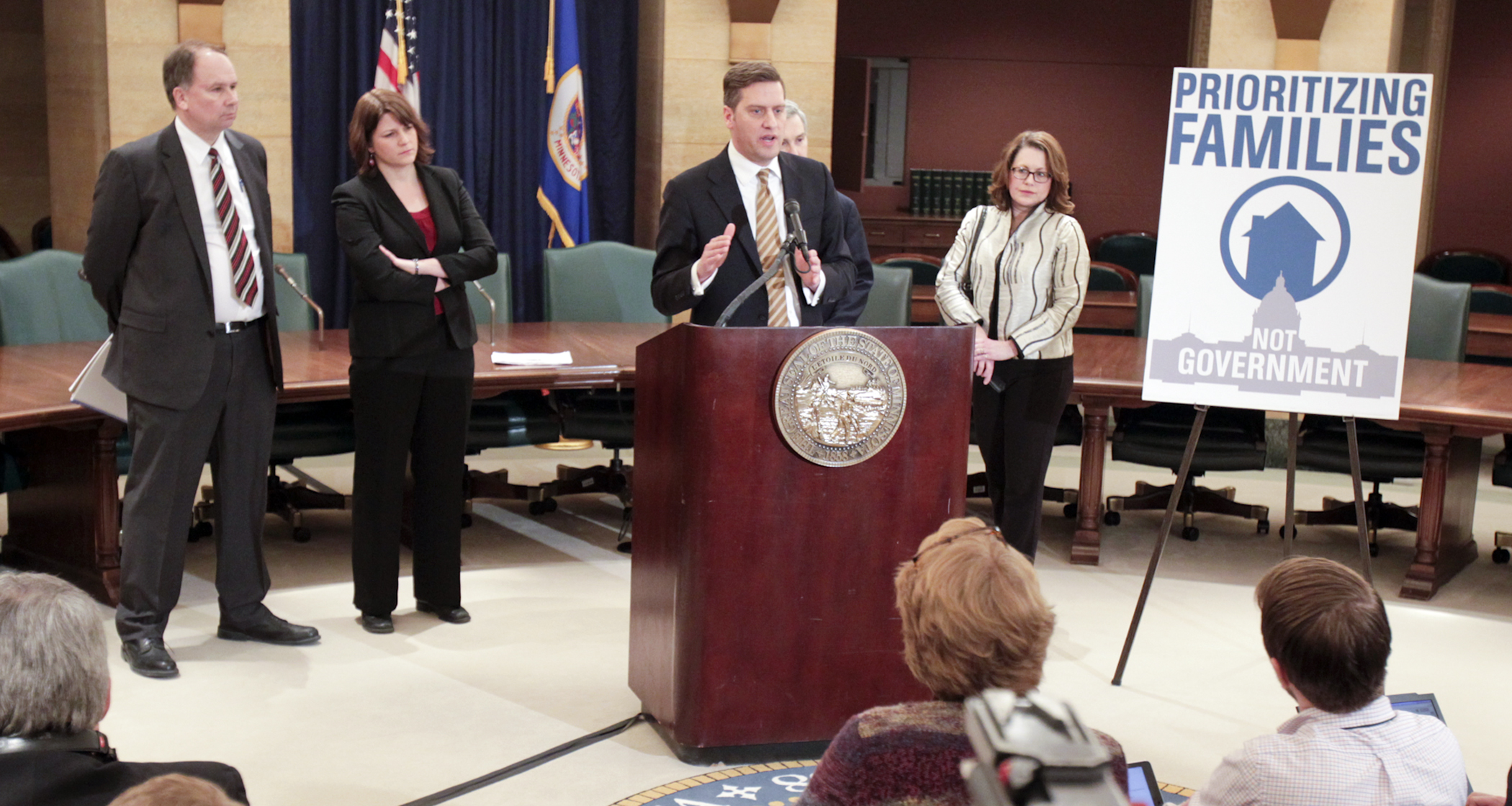State budget surplus jumps by $832 million to almost $1.87 billion

UPDATED: 2:59 p.m.
The state can look forward to a nearly $1.87 billion surplus in the next biennium, Minnesota Management & Budget announced Friday.
The February Budget and Economic Forecast shows an increase of $832 million over the surplus projected in the November forecast.
“The long-term budget outlook in Minnesota remains strong,” said MMB Commissioner Myron Frans at a press conference.
The twice-annual forecast from MMB provides a snapshot of the state’s economy and predicts if the state should have a projected surplus or budget deficit. MMB bases its projections on economic growth estimates, along with tax and spending patterns.
What’s behind the new, even rosier figures?
Minnesota will take in more money and spend less than previously expected, the new projections show:
- Revenues for Fiscal Year 2016-17 are projected to be $42.5 billion — a $616 million, or 1.5 percent, increase over November’s estimates.
- Current law spending of $41.13 billion is $115 million (0.3 percent) less than previously projected.
- Revenue and spending changes combine to add $107 million to the state’s beginning balance for Fiscal Year 2016-17.
The economic outlook for the country as a whole, which appeared weakened in November, now looks strong, especially in the near term. Gross domestic product, expected to rise in 2015 by 2.6 percent last November, now appears on track for 3 percent growth this year, state officials said, citing IHS Economics, MMB’s macroeconomic research consultant. Projected growth in 2016 and 2018 is looking slightly slower than appeared in November (2.7 and 2.8 percent, respectively).
The plummeting price of oil and the increasing strength of the U.S. dollar have both positive and negative effects on Minnesota, but should, on balance, be a boon for the state, said State Economist Laura Kalambokidis. Not being an oil-producing state means consumers and businesses enjoy the benefits of lower gas prices, and Minnesota’s diverse economy is insulated from swings in that sector.
Economic indicators show the state in good shape, with the fifth-lowest unemployment rate in the nation (3.6 percent in December). Individuals’ incomes are on the rise, meaning Minnesota will see more an estimated $393 million more in revenue than expected. And general sales tax revenues are now forecast to bring in $124 million more than the prior estimate.
“Over the last few years we have righted the ship. Please remember that six years ago, four years ago, and two years ago, we were facing large deficits as we began the budget process,” Frans said. “Minnesota is truly a success story.”
But will the good times last?
Forecasters look 29 months out and see a strong outlook for Minnesota’s budget over the long term, with budgets in the black for the 2014-15, 2016-17 and 2018-19 biennia. However, those projections depend on economic conditions that can change, as well as the state budget that is enacted for 2016-17.
Applying fortune to future
“I’d rather have a surplus than a deficit,” said Gov. Mark Dayton, appearing after the MMB press conference.
The state’s economic success had produced the surplus, Dayton said, with more Minnesotans working than ever before. When he took office, Minnesota was “still in the clutches of the Great Recession,” he said, but the state has since led the nation’s economic recovery.
 House Minority Leader Paul Thissen responds to the February Budget and Economic Forecast on Feb. 27. The state is now expected to have a nearly $1.87 billion surplus over the next biennium. Photo by Paul Battaglia
House Minority Leader Paul Thissen responds to the February Budget and Economic Forecast on Feb. 27. The state is now expected to have a nearly $1.87 billion surplus over the next biennium. Photo by Paul Battaglia
“It’s the highest budget surplus, I’m told, in the state’s history,’ he said.
As with his January budget proposal, Dayton said his focus remains on increasing funding for education and transportation. With the revised forecast, he now proposes fully funding universal pre-kindergarten for the state’s 4 year olds and said he would also seek to completely fund the tuition freeze sought by the University of Minnesota.
“I propose that we invest our collective good fortune in our collective better future,” Dayton said.
House Minority Leader Paul Thissen (DFL-Mpls) applauded Dayton’s proposed investments in education and said investments in economic development were needed across the state.
Thissen said if the budget forecast was viewed as a report card on how state government has been managed over the last two years and the opportunity created, the grade “was an A.” Unemployment is among the lowest in the country, he said, and consumer confidence is among the highest and businesses are expanding.
“It really is time for the economic climate change deniers to set aside their arguments,” Thissen said.
Thissen challenged Republicans to accept the state was on the right track and to build on the progress of the last two years.
Give it back?
House Speaker Kurt Daudt (R-Crown) said that while Republicans were excited the economy had “improved pretty substantially since the November forecast,” he asked Democrats to take a deeper look at where the surplus was actually coming from. Daudt gave credit to low gas prices which put more money in the pockets of Minnesotans.
 House Speaker Kurt Daudt responds to the news that the February Budget and Economic Forecast, released Feb. 27, shows the state is expected to have a nearly $1.87 billion surplus over the next biennium. Photo by Paul Battaglia
House Speaker Kurt Daudt responds to the news that the February Budget and Economic Forecast, released Feb. 27, shows the state is expected to have a nearly $1.87 billion surplus over the next biennium. Photo by Paul Battaglia
“That is what improves Minnesota’s economy and that is what this is due to,” he said.
Daudt said the surplus should put to rest any talk of an increase in the gas tax and said Republicans would be working to return some of the money to Minnesotans through tax relief, although they would invest “real money” in K-12 education and nursing homes, as well as roads and bridges.
“With probably the majority of this money, we’re going to propose to give back to Minnesotans,” Daudt said. “Gov. Dayton and the Democrats in the Senate are going to have to make the argument Minnesotans don’t deserve their money back.”
Bonding bill could be funded
Although 2015 is not typically a bonding year in the legislative cycle, Dayton has said he would like lawmakers to send him a bonding bill in the range of $850 million.
Frans noted that the new projected budget surplus would cover that amount of bonding.
Dayton indicated he would put forth a bonding proposal in late March.
Related Articles
Search Session Daily
Advanced Search OptionsPriority Dailies
Ways and Means Committee OKs proposed $512 million supplemental budget on party-line vote
By Mike Cook Meeting more needs or fiscal irresponsibility is one way to sum up the differences among the two parties on a supplemental spending package a year after a $72 billion state budg...
Meeting more needs or fiscal irresponsibility is one way to sum up the differences among the two parties on a supplemental spending package a year after a $72 billion state budg...
Minnesota’s projected budget surplus balloons to $3.7 billion, but fiscal pressure still looms
By Rob Hubbard Just as Minnesota has experienced a warmer winter than usual, so has the state’s budget outlook warmed over the past few months.
On Thursday, Minnesota Management and Budget...
Just as Minnesota has experienced a warmer winter than usual, so has the state’s budget outlook warmed over the past few months.
On Thursday, Minnesota Management and Budget...